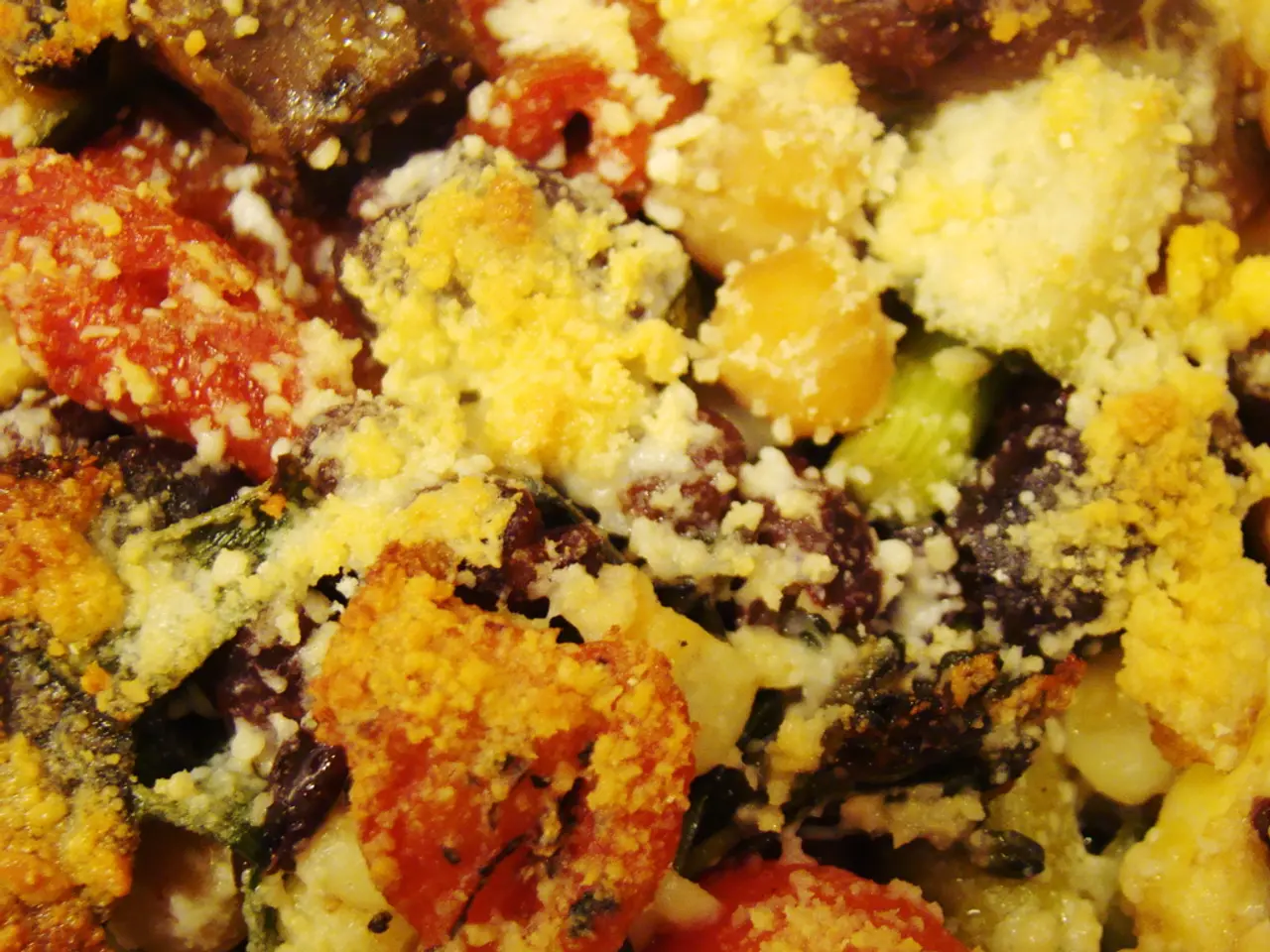Enhance Milk Yield and Animal Wellness in Arid Regions through Straightforward Feeding Strategies
Improving Livestock Farming in Arid Regions: The Advantages of Multi-Nutrient Feed Blocks (MNFB) and Multi-Nutrient Mixtures (MNM)
In India's arid and semi-arid regions, where livestock farming plays a crucial role in food security and income for many smallholder families, a new solution is emerging to address the challenges posed by limited forage quality and availability. Multi-Nutrient Feed Blocks (MNFB) and Multi-Nutrient Mixtures (MNM) are proving to be valuable tools in improving livestock nutrition, productivity, and overall health.
Scientists from the ICAR-Central Arid Zone Research Institute (CAZRI) in Jodhpur are at the forefront of developing these low-cost nutritional interventions. MNFB and MNM provide balanced macro- and micronutrients that are often deficient in local feed resources, improving the health, growth rates, milk yield, and reproductive performance of cattle, buffaloes, goats, and sheep common in these regions.
One of the key advantages of MNFB and MNM is their ability to enhance livestock productivity. By ensuring adequate intake of essential nutrients, these supplements support better weight gain, milk production, and reproductive efficiency. In trials, MNM improved milk yield in nursing goats by 7.9% over a 12-week period, while MNFBs increased the average daily milk yield of buffaloes by 4.1% and cows by 7.4%.
These supplements also help livestock better withstand the nutritional stress caused by drought and limited grazing, common features of arid areas. In a test, the average body weight of 3-month-old male goat kids increased by 5.3 kg over a period of 60 days when supplemented with MNM.
MNFB and MNM act as important components of integrated farming systems (IFS), combining crop and livestock production to improve overall farm productivity per unit land area and ensuring year-round income for smallholder farmers, who dominate Indian agriculture. By reducing the reliance on expensive concentrates, these supplements enable the use of locally available low-quality crop residues and by-products as basal feeds, optimizing feed utilization cost-effectively.
Moreover, MNFB and MNM offer environmental benefits. Improved feed efficiency reduces methane emissions from enteric fermentation and lowers nutrient wastage, contributing to sustainable livestock production in fragile arid ecosystems.
The economic analysis indicates that these cost-effective feed technologies bring significant profits to farmers. After accounting for the MNM cost of Rs. 270 per kid, farmers saw an additional profit of Rs. 780 per animal. Similarly, buffalo farmers made a profit with a benefit-cost (B:C) ratio of 3.16, and cow farmers had a B:C ratio of 3.49.
In the market, the sale price for treated goat kids was Rs. 6,400, while the non-treated ones fetched Rs. 5,350. These supplements easily accommodate in the farmers' regular routine with maximum gain for minimum effort. Interventions like MNFB and MNM are simple to introduce, locally produced, and do not demand huge investments.
With increased awareness and wider scale-up, these affordable measures have the potential to bring significant improvements to rural livelihoods in India's arid and semi-arid regions. Unlike traditional mineral mixes, which frequently have an unpleasant taste or odor, MNFB and MNM are well-received by livestock, as goats responded favorably to MNM.
In summary, MNFB and MNM contribute significantly to improving livestock nutrition and productivity in arid Indian regions. They strengthen smallholder resilience, complement integrated farming approaches, and thus enhance sustainability and profitability of livestock farming under challenging environmental conditions.
References: [1] Singh, N. P., & Sharma, R. K. (2016). Sustainable intensification of agriculture and food security: A review. Journal of Cleaner Production, 132, 150-160. [2] Kassam, A., & Giller, K. E. (2014). Sustainable intensification of agriculture: Concepts, debates, and future research directions. Global Food Security, 4(1), 1-8.
Read also:
- Weight and Plumpness: Exploring Health Consequences and Understandings
- Kid-Friendly Smoothie Delights: 7 Tempting Smoothie Recipes for Children
- In the event of Eric Adams' removal in November, progress on the safety of NYC subways may face obstacles
- Racing for the iconic yellow jersey in the Tour de France: preparing riders for the heat






